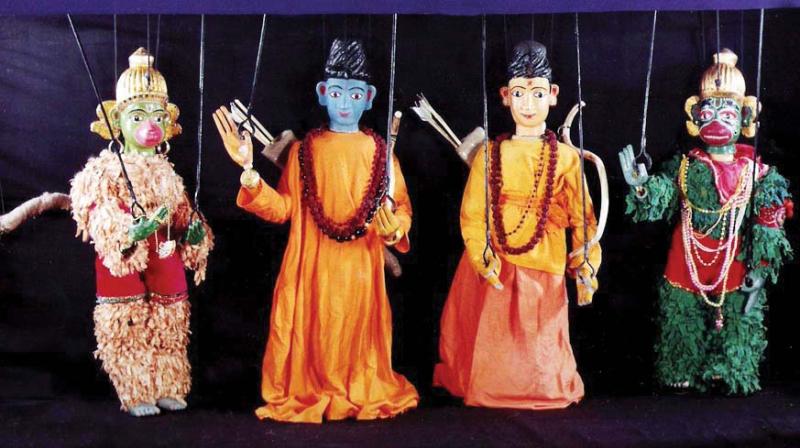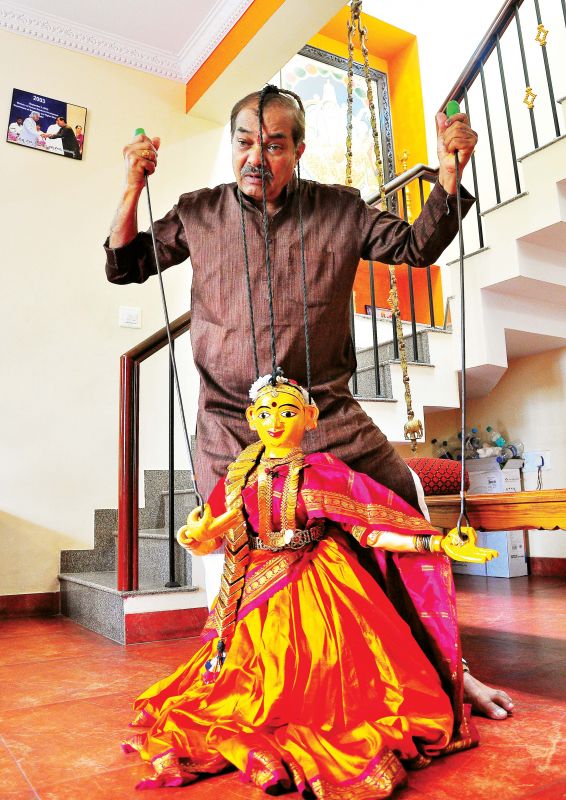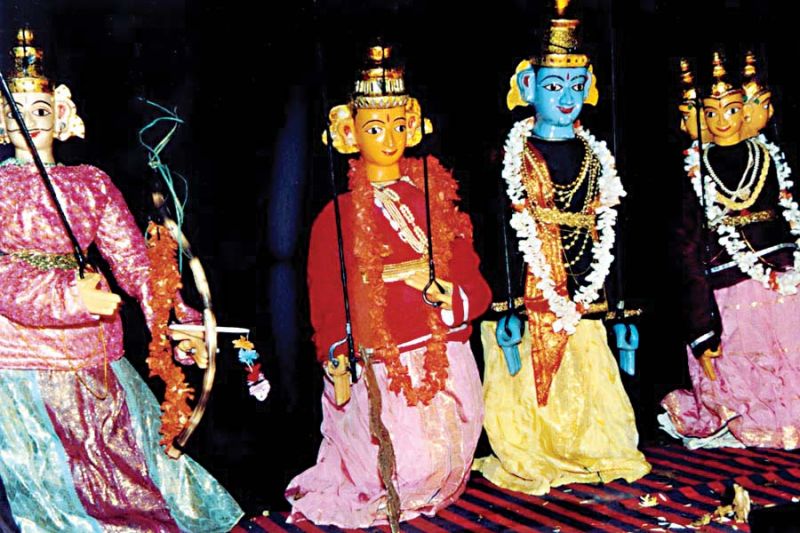Urban Legend: Dattatreya pulling the right strings

It takes less than a second for the scene to come to life. As four figures drop on to the stage, the play of light and shadow against the black backdrop, the quartet dance, animatedly to the tune of the puppeteer, bringing age-old stories to life, ranging from mythology, and yore and modern themes. These are the puppets that have enchanted the audiences for thousands of years, since the days of the Rig Veda and still hold their own against tablets and smartphones. Aksheev Thakur meets the grand old man who holds the strings.
“You would be surprised to see the number of young people at our shows. Puppetry is still relevant because of the interest of the enthusiasts, who raise funds on their own and organise shows, despite the obvious lack of interest by the government," says Dattatreya Aralikatte, the celebrated puppeteer, who has won scores of recognitions, including two national awards.
At his home, lined with these larger than life puppets, he pulls adeptly at a female figurine, the goddess Lakshmi, a puppet that he says he considers to be his daughter. “Puppet theatre is mentioned as far as back as in the AtharvaVeda, which has a section on the art of puppet theatre. We have kept the centuries-old art form alive and relevant, by using it to promote girl's education, literacy and health awareness.”
 His tryst with puppetry began in 1981 when his 'guru' M.R. Ranganath Rao, himself a national award winner, made him learn the ropes of the art from.
His tryst with puppetry began in 1981 when his 'guru' M.R. Ranganath Rao, himself a national award winner, made him learn the ropes of the art from.
His tryst with puppetry began in 1981 when his 'guru' M.R. Ranganath Rao, himself a national award winner, made him learn the ropes of the art from. A trained teacher, Mr Aralikatte taught geography at the Bangalore High School and also worked at Akashwani or the All India Radio. His stint with radio helped him learn the nuances of voice modulation, scriptwriting and music, which would later pay off when he took the plunge into puppetry, as a full time puppeteer.
The fortuitous decision earned him fame and took him places. In 1982, he performed in front of the elite audience of then Prime Minister Indira Gandhi and her family in Delhi, and they were left spellbound by his superlative craft.
 Within seconds, the puppet takes on a life of its own, as Mr Aralikatte sings the folklore of Narayana and Lakshmi.
Within seconds, the puppet takes on a life of its own, as Mr Aralikatte sings the folklore of Narayana and Lakshmi.
“Today, I can compete with the modern media. I am well versed with literature and music. Ours is a team of 10 artistes and we have performed at world festivals in Tehran, Brazil and many South American countries,” he says with pride as he ties the rope of the wooden puppet weighing 8-10 kg to his head and fixes the iron road to the thumb of the puppet which is in 'Mudrika style'. Within seconds, the puppet takes on a life of its own, as Mr Aralikatte sings the folklore of Narayana and Lakshmi.
“Right from designing the costumes and puppets, to conceptualising the script, the entire pre-production work is done by me. Our team lays on the fine performance,” he says, proudly
On how the vanishing art can be revived, he said, “puppets should be represented in calendars. Our officials could present wooden puppets to foreign dignitaries during their visit.”
With a tinge of sadness, he says, “Unlike in India, countries like Iran, Holland, Polland and Pakistan have an established puppetry department. Thankfully, in our country, people are still interested in the art. They raise funds and organise shows.”
To make puppetry interesting for the youngsters, he has introduced glove puppets, which are used to narrate Panchatantra tales to children. “I am ready to teach the art with a scholarship to those who are interested in taking it forward. There has been no help from the government to revive the culture. I request the chief minister to give a piece of land where I could start a puppet theatre. It is not for my personal gain, but to revive the ancient Indian art form. Forty years ago, over 100 puppet theatres were spread across the country. Today, we can count them on our fingers. We should not let the art die,” he says, pointing to the certificate bestowed on him by The American Biographical Institute which appointed him to the board of researchers in 1999.
Over the years, audiences have stayed kind, generous and, at times, outright whacky. The performance that has stayed with Mr Aralikatte was in 2011 at Dharwad, which was reeling under six straight years of drought. “Villagers had asked us to perform at the local temple, as they believed that it would bring them the much-needed rain. When we finished our performance, they paid us in kind, in 100 buckets of jaggery! We did not know what to do with so much of jaggery so I donated it to the math.”

